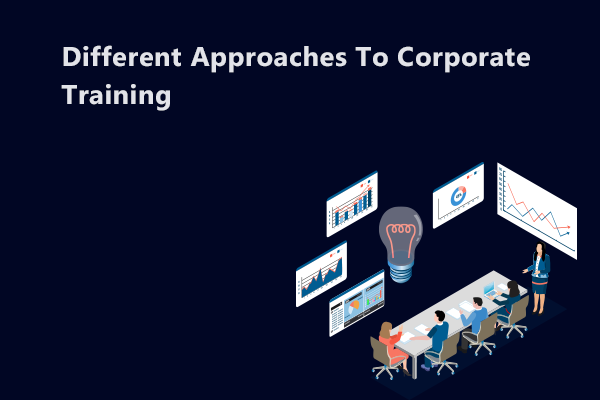
Different Approaches to Corporate Training
Managers of corporate training programs must provide opportunities for further training and growth to create a happy, productive workforce. Most employees and managers dislike corporate training or dismiss it as they might think it is unnecessary. There's no getting around the fact that corporate training courses can be challenging, but only when it's paired up with the wrong type of topic or issue. Making sure your employees receive the information they need in the format best suited to their needs is important.
Corporate training is not exactly known for being fun or highly effective among employees. Nevertheless, new approaches have emerged - some low-tech and some high-tech - in the last several years.
We have summarized some of the latest approaches in this article:
Different Approaches to Corporate Training
eLearning
To deliver employee training, eLearning uses online videos, tests, and courses. Corporate Training Courses can be performed on a smartphone or company computer.
Taking advantage of technology to conduct corporate training can be one of the easiest ways to reach a larger audience. Training can be carried out using several activities, or even gamified components, it can also help you keep your employees engaged.
Competency Mapping
The purpose of Competency Mapping is to identify key competencies within a company or institution and the jobs and functions within it. There are different types of Competency Mapping that can vary across the companies.
A competency map assesses the strengths and weaknesses of a worker or organization. This involves identifying a person's strengths and skills in areas such as teamwork, leadership, and decision-making. Thus, it identifies a person's strengths and abilities in areas such as leadership, decision-making, and teamwork.
The two major areas of strength in competency mapping models are functional and behavioral. A functional skill is a knowledge that is required for the person to accomplish a task. A secretary, for example, might need to be familiar with computers and office machinery, as well as have knowledge of bookkeeping. A skill test can define whether a worker is capable of carrying out his or her responsibilities by measuring these skills.
An effective firm has clearly defined roles and lists of competencies for each role. A list like this should be used for recruitment, performance management, promotion, placement, and identifying training needs.
Interactive Training Program
Actively engaging learners in their own learning is one of the most effective methods of corporate training courses at work. Learners are more likely to be engaged and retain skills if they practice them in real work settings. However, in-person it can take a lot of time, especially if the learner requires regular feedback from an expert.
Participation In Role-Playing
Role-playing is similar to group discussions in that it asks employees to work through a specific aspect of their job. As they work through the role-playing activity, they will be required to consider different perspectives. When discussing simple, straightforward topics, role-playing is highly effective.
The Concept Of Blended Learning
Learning at both a classroom and online level is blended together in a blended learning program. Combining these two approaches can result in a learning experience that combines the best aspects of each. Identify the best training methods for your organization by assessing your existing corporate training programs.
Using Simulations
During simulations, employees work through problem situations as a team. A team of employees, for instance, takes on the management of a food truck business, aiming to learn how to make dynamic business decisions. There is a debriefing session after the simulation with experts who discuss what went well, what went wrong, how to improve, and what the main takeaways should be.
Takeaway
It is rare for a corporate training program to be a one-time event today. A company must continuously develop its employees' skills and encourage workplace learning in order to survive and flourish. Most of the time, a variety of training methods will be useful at some point in the learning process.
A blend of delivery is favoured by employees, as has been demonstrated repeatedly by surveys. A Learning Management System with talented partners to provide accurate employee training makes it easier to use both offline and online training methods. You can track progress and organize all your training methods effectively.
